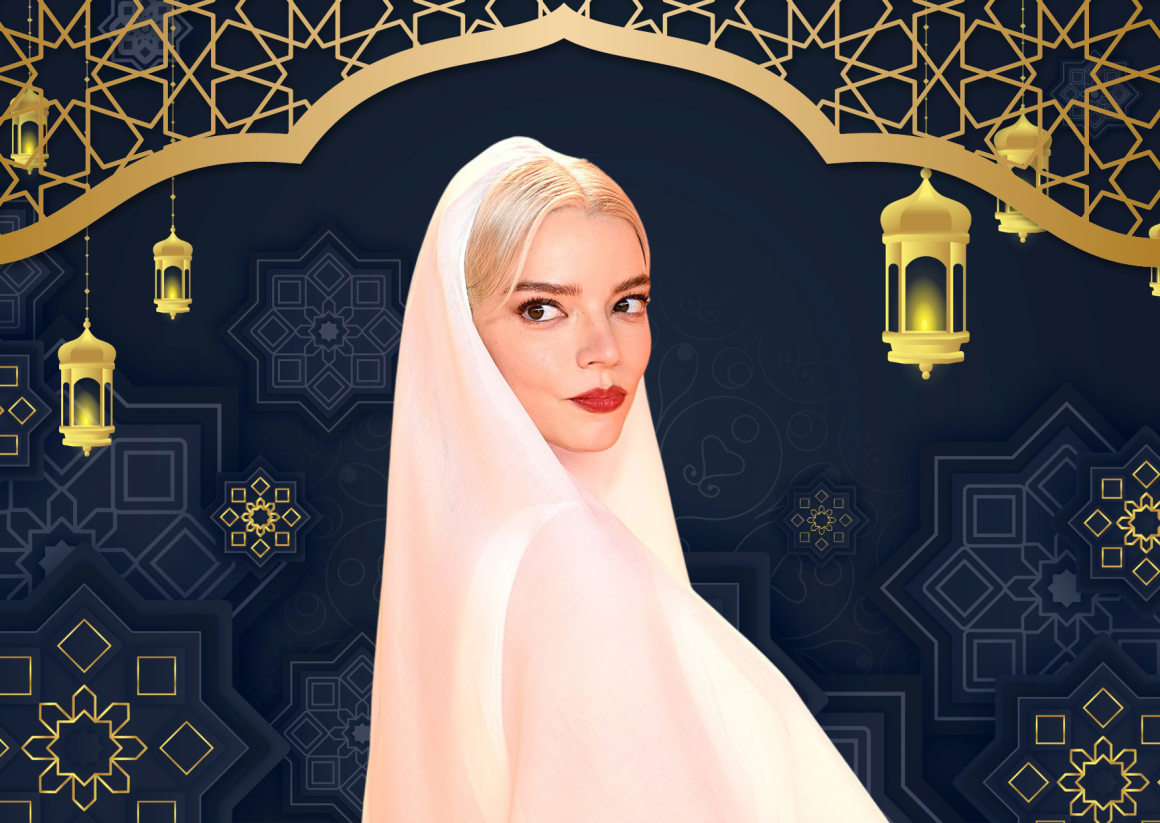
Islamic identity and the stereotypes who miss the beauty of it
By Maida Azhar, March 28 2024—
A wise man once told me “The moment you judge someone by their appearance, is the moment you miss every beautiful part about them.”
A bold celebrity woman, taking her own goddess form proudly stands on the red carpet wearing an outfit that resembles the Hijab and Abaya. A woman as white as snow with hues of moonlight hair captures the eye of the public. For she is mesmerized and praised for her beauty and her outfit which gives her an angel-like look. However, those eyes are quick to judge if that celebrity was replaced by a woman with caramel skin who wears her religious Hijab and Abaya, she would likely not be mesmerized or respected. Instead, a piece of fabric on a Muslim woman labels her a terrorist by the public.
On Feb. 15, during the premiere of the movie Dune, Anya Taylor-Joy graced the red carpet in a stunning white Dior gown, covering her body and hair. The attire bore a striking resemblance to the religious styles of the Hijab and Abaya. Dior, a renowned French fashion house, paradoxically seems to appreciate Hollywood actresses adopting a look akin to Islamic clothing while simultaneously expressing disdain for Muslim women embracing their religious attire. In fact, Muslim women in France face fines if spotted wearing their religious outfits in public, adding to their challenges. The discrimination extends to educational institutions, where Muslim girls are compelled to remove their hijabs before entering schools. This contradicts the ideal purpose of schools, which should foster education and acceptance for all individuals.
The issue isn’t confined to Muslims alone; it extends to racial discrimination as well. Phrases like “Flying while Muslim” emerging post-9/11, parallel the challenges faced by the Black community encapsulated in the phrase “Driving while Black.” These phrases underscore the pervasive discrimination, Islamophobia and negative stereotypes faced by various races and religious groups. In response to Anya Taylor-Joy’s outfit and the broader issue of negative Muslim stereotypes, British actor Riz Ahmed, nominated for the Best Actor award, established the Blueprint for Muslim Inclusion fund. This fund aims to counteract negative portrayals of Muslims in the media and addresses the unjust connection of Islamic clothing to “terrorism,” leading to discrimination, racism and clothing bans.
To my dearest Muslims, indeed when the eyes of those who are uneducated judge us, they miss every beautiful part about who we are. When those eyes judge us for a piece of fabric wrapped around our heads, they miss the beauty of Islam and the reasoning behind those traditional clothes. They miss how Islam teaches the well-being of life, how the pages in the Quran are filled with thousands of beautiful verses that educate the self to live a life where you dwell in the beauty of loving yourself, being respectful towards one another and worshiping the creator who gave you a purpose of this gift called life.
Moreover, they miss the beauty of our purpose of wearing a hijab and an abaya for this piece of fabric is not linked to terrorism but rather is to express our religious faith, to protect themselves from being harassed in public and can be a form of empowerment and identity to express the challenges they are faced with by stereotypes. In a world where human beings have created technologies and resources, they succeeded in using their minds for such intellectual creations but failed to use their hearts for the basic aspects of life: to share love, respect and kindness towards others.
This article is a part of our Voices section and does not necessarily reflect the views of the Gauntlet editorial board.
